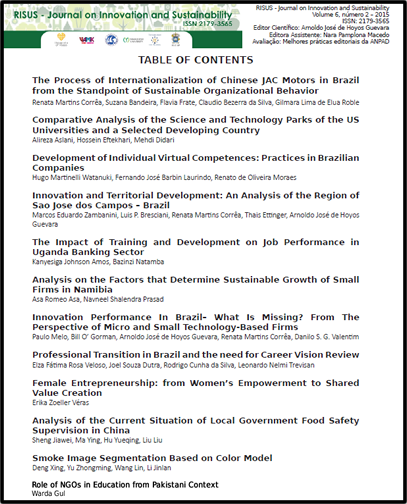Comparative Analysis of the Science and Technology Parks of the US Universities and a Selected Developing Country
DOI:
https://doi.org/10.24212/2179-3565.2015v6i2p25-33Palabras clave:
Science and Technology Park, Innovation, Commercialization, Developing countries, US universities, University of tehranResumen
Science and technology parks (STP) are as the main linkage between university and industry in order to develop and commercialize innovations and new products/services. A STP is an area where innovation is a key and supports university, industry and even government collaborations to speed the development of high tech-economic and advancing knowledge. They provide a variety of shared resources such as incubators, collaboration activities, uninterruptible power supply, reception and security, science and technology corridor, management offices, restaurants, bank, internal transportation, entertainment and sports facilities to bring the potential ideas and products/services in the market and industry to improve the community prosperity.This research reviews the STPs located in the US universities in order to have a comparative analysis with a STP located in the developing countries. Our case is the STP of the University of Tehran in Iran. Although the STO of University of Tehran is working with more than 10 years’ experience, however, there are noticeable gaps between the achievements and potentials and targets based on the assessment indicators. Therefore, comparative studies with successful cases help to cover such gap. Our research also presents an innovative framework in order to better performance of STP of the University of Tehran.
Descargas
Publicado
2015-08-10
Número
Sección
Papers
Licencia
This Journal is licensed under a Creative Commons Attribution-Non Commercial-No Derivers 4.0 International license.
1.The author (s) authorize the publication of the article in the journal;
2.The author (s) warrant that the contribution is original and unpublished and is not in the process of being evaluated in other journal (s);
3. The journal is not responsible for the opinions, ideas and concepts emitted in the texts, as they are the sole responsibility of its author (s);
4. The editors are entitled to make textual adjustments and to adapt the articles to the standards of publication.


